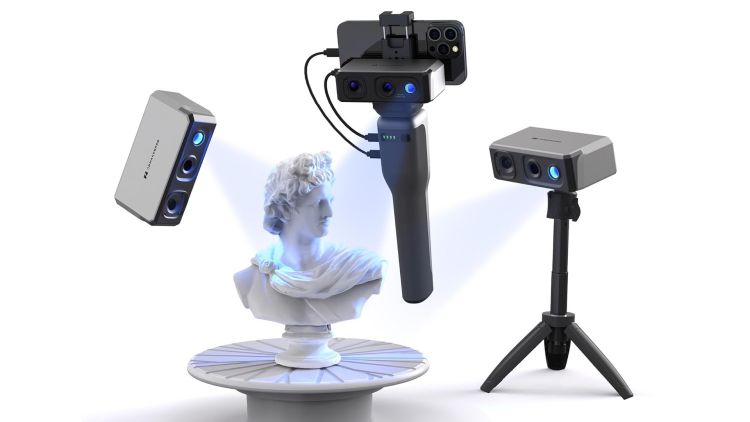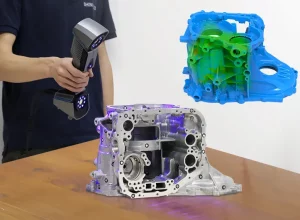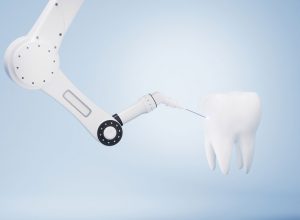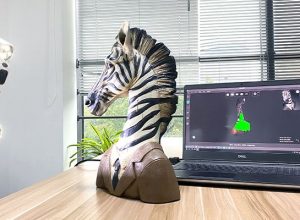Contents
Top 3D Scanners for Beginners in 2025: A Comprehensive Guide
The world of 3D scanning continues to evolve rapidly, offering increasingly accessible technologies for newcomers and hobbyists. This guide explores the most promising 3D scanners that provide an excellent entry point for beginners in 2025.
Key Considerations for Beginner 3D Scanners
When selecting a 3D scanner, beginners should focus on several critical factors that will determine the effectiveness and usability of their scanning experience:
Detailed Evaluation Criteria
| Factor | Technical Significance | Beginner Impact |
|---|---|---|
| Ease of Use | Intuitive interface, minimal technical configuration required | Reduces learning curve, enables quick start |
| Affordability | Cost-effective entry point, reasonable price-to-performance ratio | Allows experimental learning without significant financial investment |
| Scan Quality | Resolution, accuracy, depth perception capabilities | Determines precision of captured 3D models |
| Software Compatibility | Integration with standard 3D modeling platforms | Ensures smooth workflow and data processing |
| Versatility | Adaptability to different scanning environments and object types | Provides flexibility for various project requirements |
Technical Insights for 3D Scanner Selection
Modern 3D scanners for beginners typically offer resolution ranges between 0.1mm to 0.5mm, with professional-grade models providing even higher precision. Entry-level scanners often utilize structured light or photogrammetry technologies, which balance performance and affordability.
Recommended Scanning Approach
Beginners should prioritize scanners that offer:
- User-friendly calibration processes
- Comprehensive tutorial materials
- Robust customer support
- Compatible with multiple file formats (OBJ, STL, PLY)
Selecting the right 3D scanner involves understanding personal project requirements, budget constraints, and long-term learning objectives. By carefully evaluating these key considerations, beginners can make an informed decision that supports their technological exploration and creative potential.
Top 3D Scanners for Beginners in 2025: Comprehensive Guide
The 3D scanning landscape continues to evolve, offering increasingly accessible and sophisticated technologies for newcomers to the field. As we explore the top entry-level 3D scanners, we’ll dive into devices that balance performance, ease of use, and affordability.
Creality CR-Scan Lizard: Precision Meets Affordability
The Creality CR-Scan Lizard represents a breakthrough in entry-level 3D scanning technology, delivering professional-grade capabilities at a consumer-friendly price point.
| Specification | Details | Performance Impact |
|---|---|---|
| Scan Accuracy | 0.1mm | Exceptional detail capture for small objects |
| Scan Speed | 10-20 fps | Rapid scanning for time-sensitive projects |
| Price Range | $300-$500 | Accessible for hobbyists and educational use |
The device excels in capturing intricate details of small to medium-sized objects, making it an ideal choice for beginners in fields like product design, prototyping, and digital preservation.
Revopoint POP 3: Versatility in a Compact Package
Revopoint POP 3 emerges as a game-changing handheld 3D scanner that breaks down barriers for novice users:
- Advanced dual-camera system ensuring unprecedented scanning accuracy
- Lightweight, portable design allowing on-site and mobile scanning
- Cross-platform compatibility with Windows, Mac, and Linux systems
- Full-color and texture scanning capabilities
Its plug-and-play functionality makes it particularly attractive for users transitioning into 3D scanning without extensive technical background.
Einscan SE: Desktop Scanning Simplified
The Einscan SE offers a robust solution for users preferring structured, controlled scanning environments:
- Dedicated fixed/desktop scanning mode for consistent results
- Automated calibration reducing user error
- High-resolution scan capabilities (up to 0.2mm accuracy)
- Intuitive software with guided scanning workflows
Particularly recommended for educational institutions, small workshops, and design studios seeking reliable 3D scanning technology.
Key Considerations for Beginner 3D Scanners
When selecting a 3D scanner, beginners should prioritize:
| Factor | Importance |
|---|---|
| Ease of Use | Critical for maintaining user engagement |
| Accuracy | Determines quality of final 3D model |
| Price | Balancing features with budget constraints |
| Software Compatibility | Ensures smooth integration with existing workflows |
Practical Scanning Tips for Beginners
To maximize your 3D scanning experience:
- Start with simple, well-lit objects
- Practice consistent scanning techniques
- Use calibration tools provided
- Experiment with different scanning modes
Technology Evolution
The 3D scanning landscape continues to transform, with AI-enhanced technologies and improved sensor capabilities making entry-level scanners more powerful and accessible than ever before.
Conclusion
Choosing the right 3D scanner depends on individual needs, budget, and intended applications. The Creality CR-Scan Lizard, Revopoint POP 3, and Einscan SE represent excellent starting points for beginners exploring 3D scanning technology in 2025.






